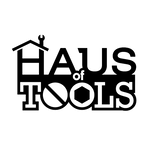A Brief History and Evolution of the Screwdriver
We’ve recently covered the origins of the screw detailing that the screw probably originated with Archimedes or one of his contemporaries. Archimedes’ screw was a large device meant for moving large amounts of water. Some believe that screws, used as a fastener, and screwdrivers began to pop up some time in the 1400’s which is the first documented use of them. Although similar devices were used with armor and flintlock firearms on a less widespread scale at some point previously. Their use was quite limited as the spiral helix of the screw was difficult and expensive to make due to primitive machining technology. Even when screws were used, from their inception until the late 1800s slotted screws and drivers were the only option available. But that has changed quite a lot over time.

The first and biggest game changer was the square-drive screw invented by P.L. Robertson. The driver used for this type of screw was an automatic screwdriver and was favored over slotted screwdrivers as the slotted driver would often slip and be generally hard to line up and use. Of course on a production line that means lost time and money, something that the square drive screw helped fix. The hex driver was also invented around this time as a way to take advantage of the recessed design introduced by Robertson, however a hexagon was thought by some to have been used to avoid having to pay Robertson royalties. You can still find square drivers and screws today, and of course hex drivers are available in an L-Key or traditional screwdriver design and are probably one of the most common drive types available.
The biggest innovation for screwdrivers came though when Henry Phillips broke onto the scene with his Phillips screwdriver, a design he bought from someone else and redesigned. His window of opportunity came when Robertson lost the rights to his invention. Without Robertson’s square drive system, manufacturers needed something that was easier to use than a slotted but they also needed something that wouldn’t get overtorqued and could escape once tightened. Phillips’ cross-shaped design held the screw tightly while it was being turned and allowed the driver to slip out once the screw was firmly in place, thus preventing damage from too much torque. While it didn’t make a lot of noise in its debut, the Phillips screwdriver is perhaps one of the most groundbreaking inventions of the 20th century.
 Not much changed until 1967 with the introduction of the Torx driver which was designed to prevent the driver from “camming out,” that is popping out as even the Phillips does by design or on occasion accidentally. This driver was also used frequently as a way to prevent tampering, however since this driver has become incredibly common, security Torx (Torx with a hole or a peg in the center) and other screwdriver types have been invented, probably the most famous of which is Pentalobe made famous by Apple in 2009. Besides these, there are literally a dozen other types of drivers or more, the most tamper proof being probably the One-way screws that cannot be unscrewed to the lament of pranksters everywhere.
Not much changed until 1967 with the introduction of the Torx driver which was designed to prevent the driver from “camming out,” that is popping out as even the Phillips does by design or on occasion accidentally. This driver was also used frequently as a way to prevent tampering, however since this driver has become incredibly common, security Torx (Torx with a hole or a peg in the center) and other screwdriver types have been invented, probably the most famous of which is Pentalobe made famous by Apple in 2009. Besides these, there are literally a dozen other types of drivers or more, the most tamper proof being probably the One-way screws that cannot be unscrewed to the lament of pranksters everywhere.
While screwdrivers and screws have been around for several hundred years, they didn’t become really practical until the last hundred years or so. Since then, specialized jobs and needs have helped introduce countless variations on what was once a pretty narrow market. Here at Haus of Tools we carry screwdrivers for just about every type of screw, so if you need something obscure, let us know!




Leave a comment